
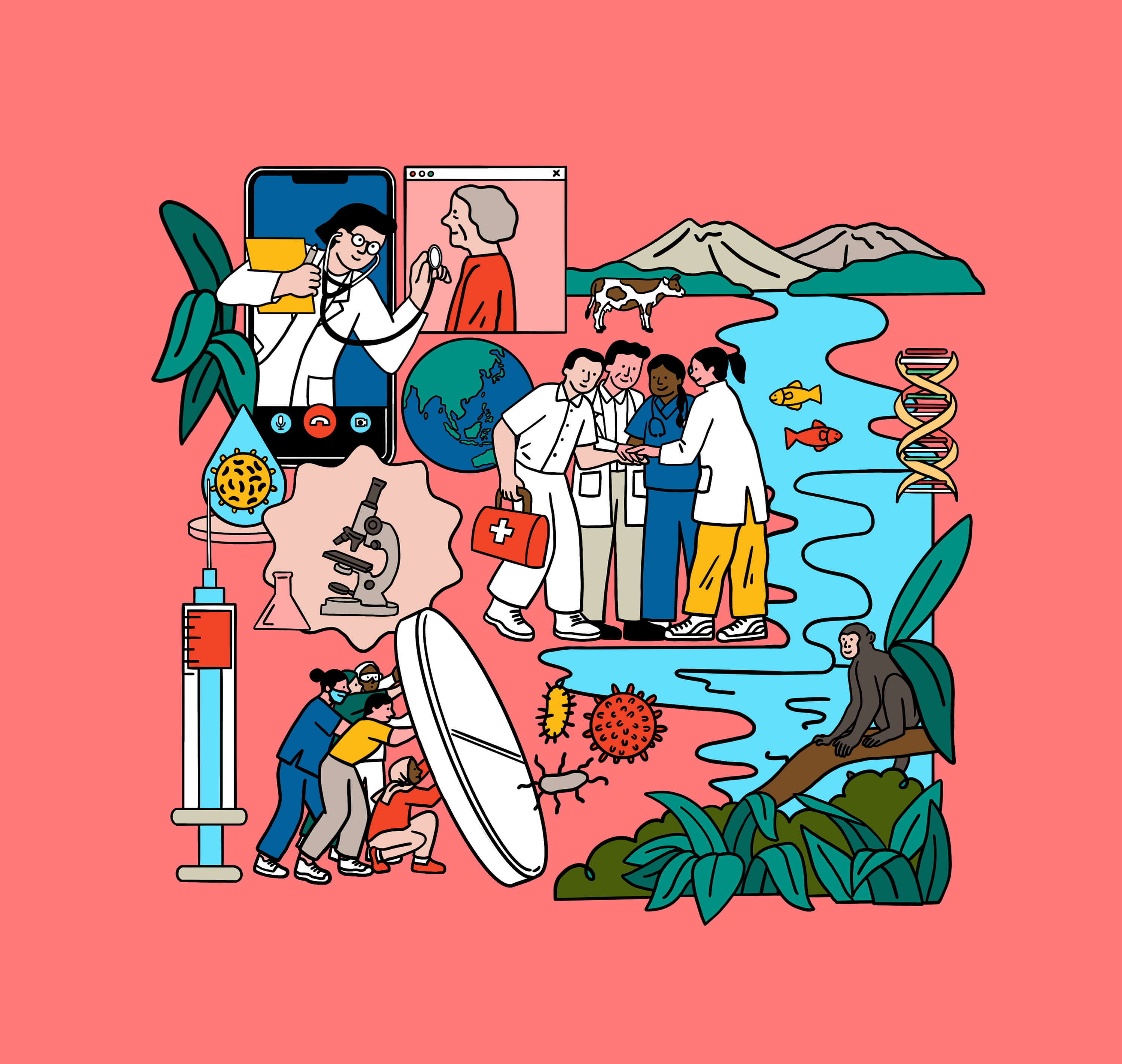


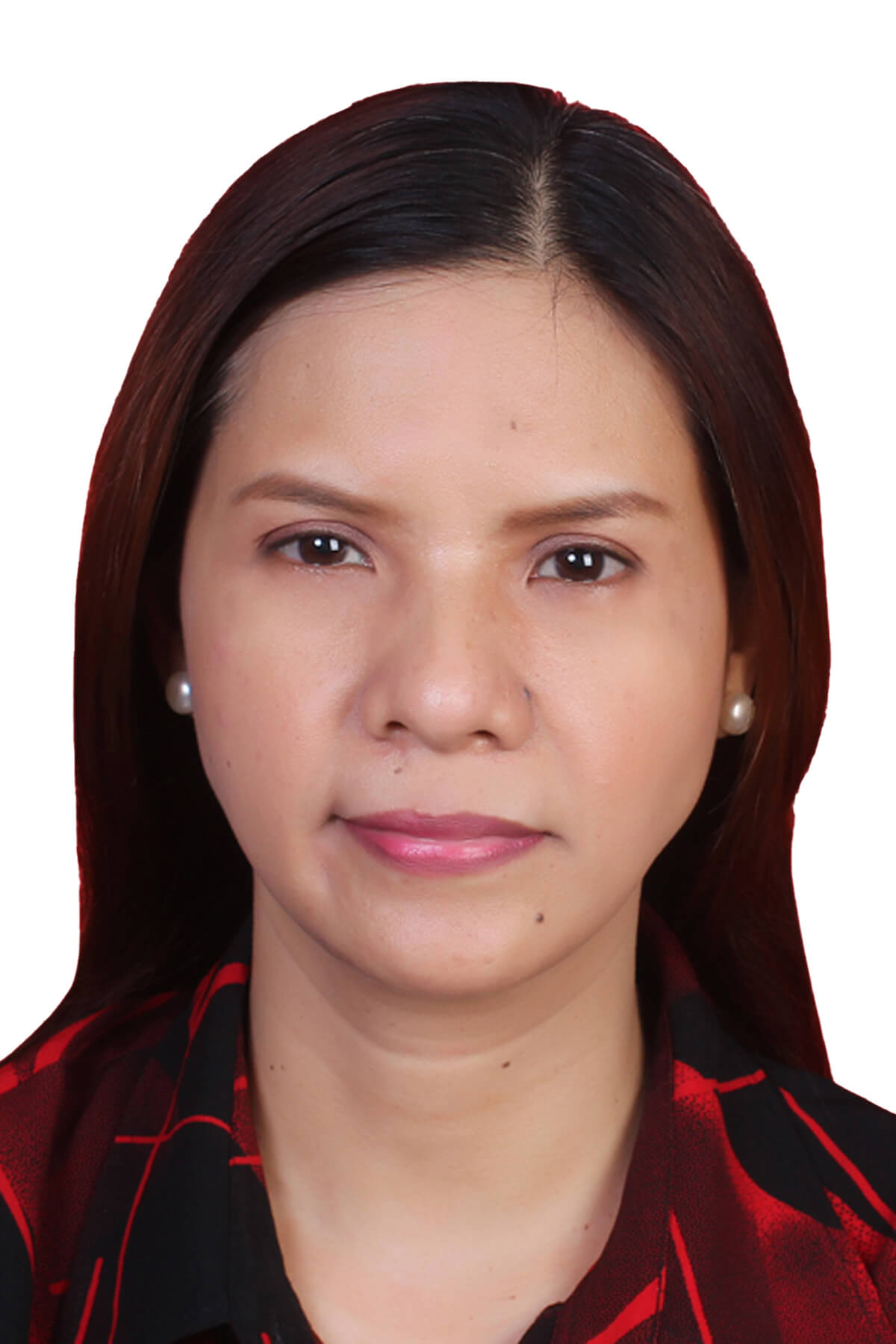
Migration is inevitable in today’s world. People migrate for different reasons, perhaps to seek better life opportunities, or to find refuge or a safer place to live. Sometimes, migration is a matter of choice, but at other times, it is a necessity.
Who is a migrant? According to the International Organisation for Migration, “migrant” is an “umbrella term for any person who moves away from his or her place of usual residence, whether within a country or across an international border, temporarily or permanently, and for a variety of reasons” (IOM, 2019).
Technological advancements, increased regional connectivity and integration, ease in transportation, and borderless social networking facilitate migration. But migration is also caused by crises and emergencies, such as natural and human-induced disasters, violence, conflicts, insecurities, and pandemics.
Migration is an urgent agenda in ASEAN since it is a major hub for migration. ASEAN Member States serve as countries of origin, transit, destination, or both for migrants. Internal and cross-border migrants in the region also appear to outnumber international migrants, according to UNICEF.
In 2019, intra-regional migrants made up over 92 per cent of the migrant population of Southeast Asia, mainly to neighbouring countries, according to ILO. Three of the top five host countries for migrants are from the ASEAN region, including Thailand (3.6 million), Malaysia (1.5 million) and Singapore (1.2 million) (ILO, 2015).
If migration is governed safely, orderly and humanely, it can benefit society at the local, regional, and international levels. It can boost socio-economic growth and productivity towards achieving sustainable development and improving people’s lives. The challenge is to balance the positive and negative impacts of migration to ensure that no one is left behind.
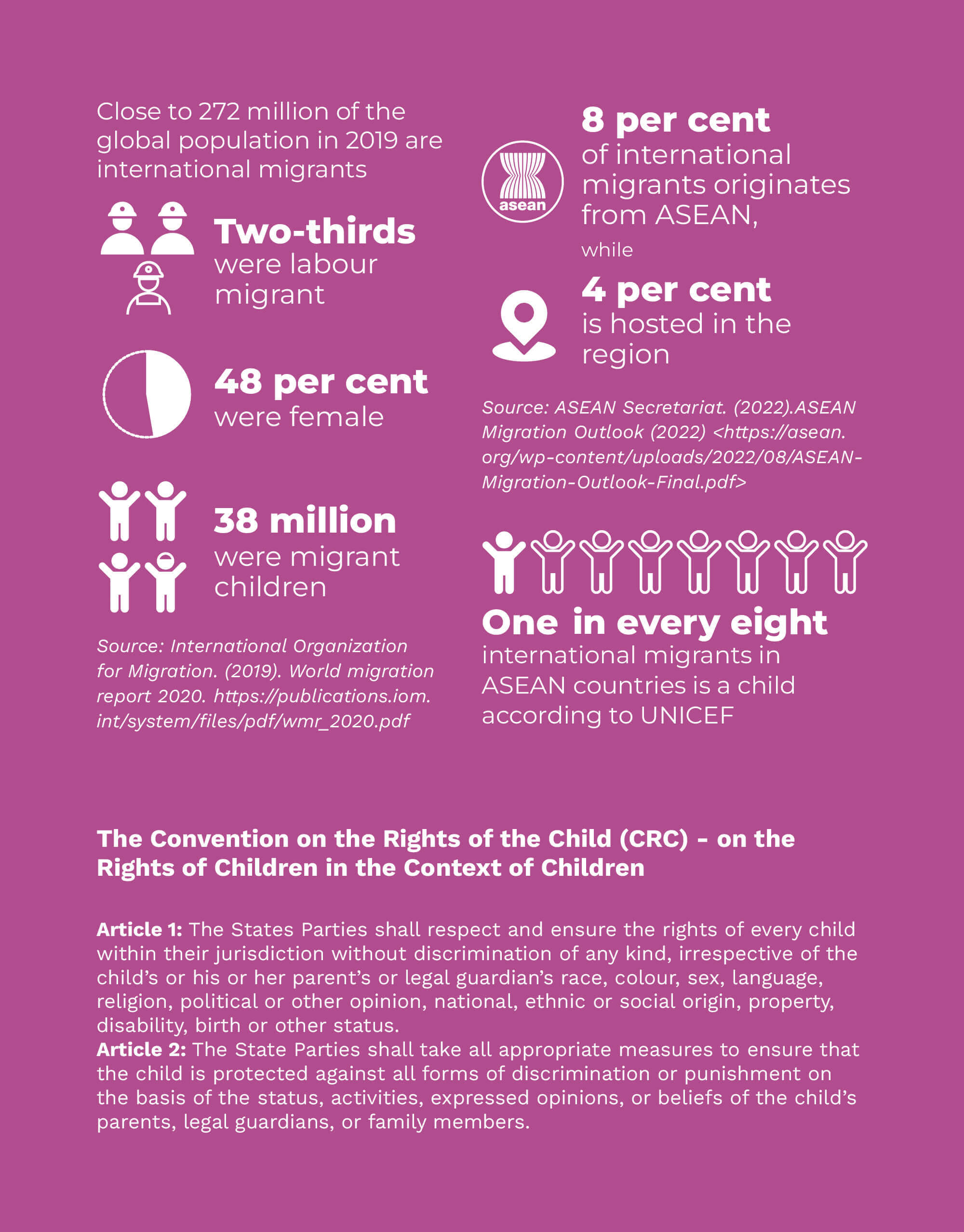
Child migrants’ rights
The current state of migration around the world presents enormous challenges that go beyond the issues of migrant workers and refugees, or the adult migrants. Migration equally and urgently concerns children; however, they are commonly invisible in the discussion of issues, analysis and solutions. Their needs and concerns are thus left unheard and unaddressed.
ASEAN is committed to promoting and protecting children’s rights, including those in the context of migration, as a matter of policy and moral imperative. Ending all forms of violence against children has been at the centre of ASEAN’s priorities. ASEAN aims to create a safe and peaceful society where all children can prosper, thrive, and develop.
The Convention on the Rights of the Child (CRC) guarantees the rights of children regardless of their migration status. Realising this universal commitment to children, however, is challenged by the growing phenomenon of migration within and beyond the ASEAN region, which displaces more children and exposes them to higher risks and vulnerabilities.
The number of child migrants in ASEAN reached 1.3 million in 2020. In 2021, there were around 630,000 children refugees from ASEAN. Meantime, more than 2.5 million children were internally displaced in 2021 due to natural disasters and conflicts. Parents migrating for work also leave many children at risk (UNICEF, 2021).
According to ILO, the largest number of international child migrants moved to Thailand (508,900), Malaysia (408,200), and Singapore (237,160). While the data show that fewer children migrated to other countries in the ASEAN region, they may have captured only a small proportion of the child (and adult) migrants in the region. This is because the majority of intra-regional migrants are in irregular situations (UNICEF, 2023).
Often, issues that directly affect migrant children are overlooked amid complex and competing migration concerns and priorities, such as, poverty, migrant labour issues, cross-border law enforcement, trafficking-in-persons, regional connectivity and integration, climate change, and the unprecedented impact of the pandemic.
However, the impacts of migration to children cannot be undermined and treated as mere extension of or subsumed under migrant workers’ issues. Children’s rights to protection and support must be placed at the centre of all efforts on migration. Countries cannot claim to have safe and orderly migration until they look after the safety and protection of children in migration.
Vulnerabilities and risks faced by child migrants
ASEAN recognises that children in the context of migration are particularly vulnerable to discrimination and certain types of violence, abuse, and exploitation, including bullying, forced and child labour, child early and forced marriage, sexual exploitation, gender-based violence, neglect, and domestic servitude.
Other key child protection risks as consequences of migration include, among others child immigration detention, lack of protection for refugee and asylum-seeking children, unaccompanied and separated children, and children of migrant workers; discrimination in access to basic services (e.g., health, education, protection etc.); exploitation by smugglers and traffickers; the sale of children; child marriage; millions of children left behind in origin countries while their parents migrate for work, facing risks of violence, abuse and exploitation; and lack of data on the situation of children in the context of migration contributing to their vulnerability.
Child migrants are at greater risk of statelessness if they cannot obtain identity documentation, such as a birth certificate, and/or cannot prove their connection to a country through ancestry. Statelessness deprives children of many other rights which may have long-term impacts to their overall well-being.
According to UNHCR, ASEAN is home to over one million stateless persons (who are not considered citizens of any country). In ASEAN, the largest number of stateless persons live in Myanmar, where there are 600,000 stateless individuals registered with UNHCR, and in Thailand, where there are over 560,000. UNHCR also estimates that stateless children account for a third of the overall number of stateless persons around the world.
The COVID-19 pandemic also exposed child migrants to vulnerabilities. More than three million migrants were stranded due to travel restrictions, according to IOM. This left the migrants, including their children, dependent on the support of the host country during this time of crisis. However, migrant workers were often excluded from host nation’s COVID-19 policy responses and social protection measures.
Strengthening evidence and data on children in the context of migration is a priority in the region. To understand and address the cross-cutting nature and multi-dimensional challenges faced by children in the context of migration, gender equality and social inclusion perspectives are essential.
Children face unique needs and situations depending on the reasons for migration and their country of destination. Gender inequalities and inclusion issues significantly perpetuate migration and increase the risks and vulnerabilities of women, children and persons with disabilities who experience gender-based violence and lack of protection and support.
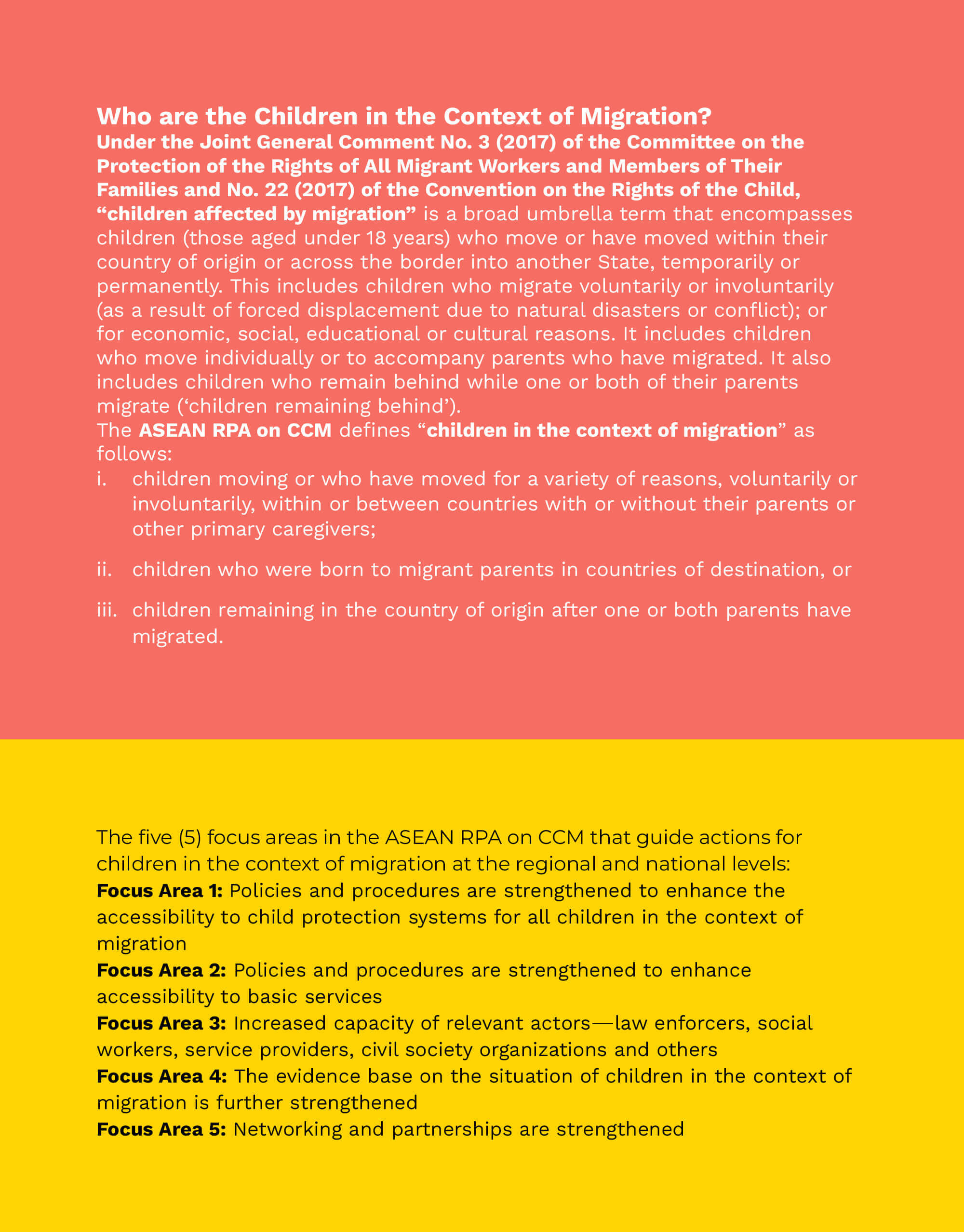
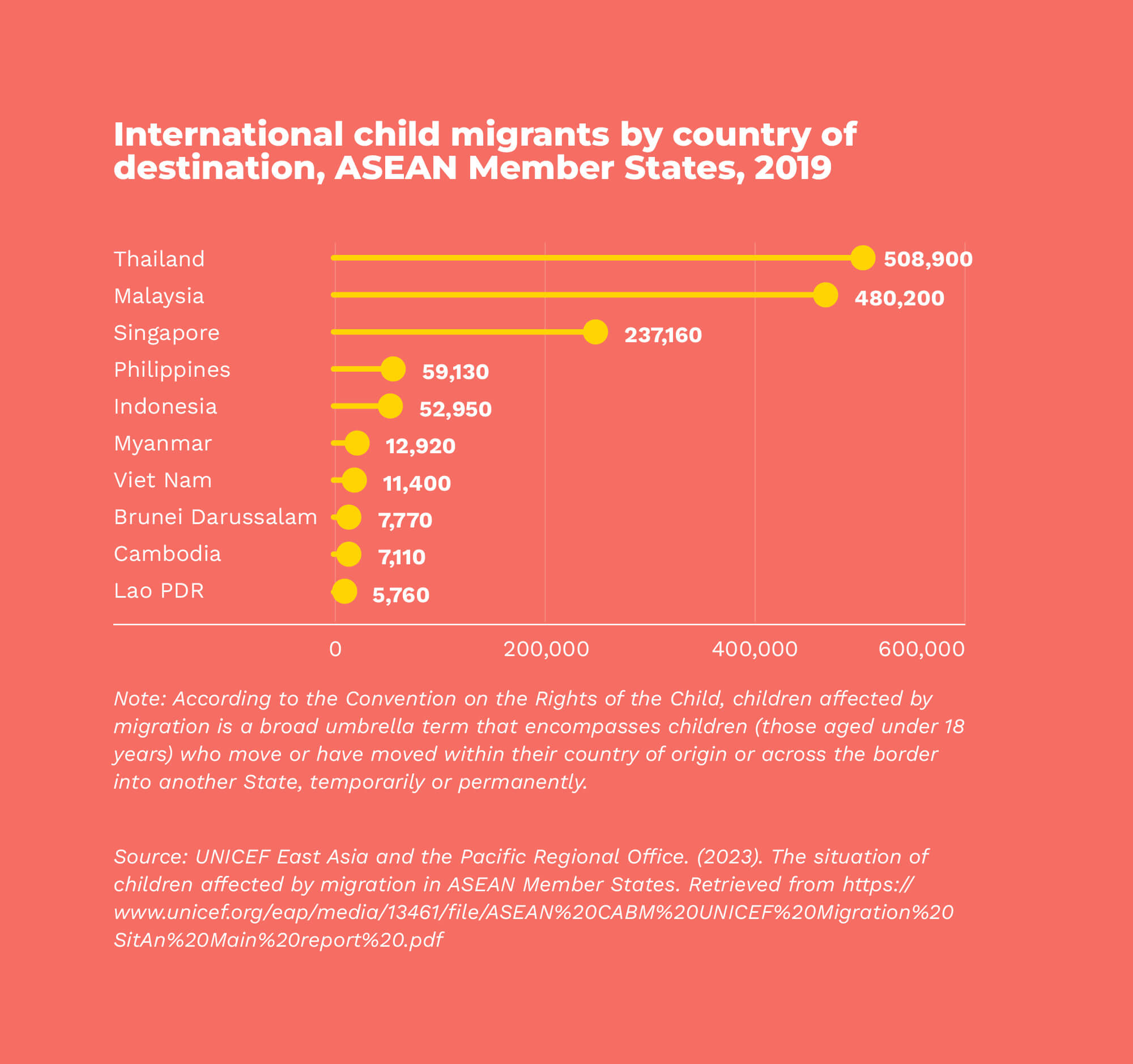
ASEAN’s efforts to protect and advance the rights of children in the context of migration
ASEAN is stepping up efforts to uphold the rights of children in the face of the growing migration issues in the region.
Following the adoption of the ASEAN Consensus on the Protection and Promotion of the Rights of Migrant Workers in 2017, the ASEAN Leaders adopted the ASEAN Declaration on the Rights of Children in the Context of Migration in 2019 and noted the Regional Plan of Action on Implementing the ASEAN Declaration on the Rights of Children in the Context of Migration (ASEAN RPA on CCM) in 2021.
The ASEAN RPA on CCM enshrined ASEAN’s commitment to respect, protect and fulfil the rights of all children, regardless of their migration status, in accordance with the CRC by 2030. It complements the implementation of the ASEAN Regional Plan of Action on the Elimination of Violence against Children (ASEAN RPA on EVAC) and leverages ASEAN’s efforts to achieving the Sustainable Development Goals in ASEAN with reference to migration while taking into consideration the Global Compact for Safe, Orderly and Regular Migration and the Global Compact for Refugees.
The global community supports an ASEAN-led approach that aims to protect the best interests of the child in all relevant policies and practices related to children in the context of migration.
Grounded on the issues and concerns and the disproportionate vulnerabilities of children in the context of migration, “child-sensitivity” and “gender-responsiveness’ are set forth as the core principles guiding ASEAN’s collective actions to strengthen national systems to provide for the specific needs of children in the context of migration, including but not limited to child protection, social protection, education, health, psychosocial support, safe environment, and justice.
As such, ASEAN endeavours to enhance the identification, referral and protection of, and assistance to all children in the context of migration, including those who are in situation of trafficking, refugees, asylum-seekers, and internally displaced children and all other children requiring protection and assistance through integrated and coordinated service delivery systems among key stakeholders.
In fostering regional cooperation to address the cross-cutting issues of migration, further inquiry into the intersectionality of migration with a broad range of issues, such as human trafficking, violence against women, online abuse and exploitation, child labour, care work, disability, and climate change, is a priority. The leadership of the ASEAN Commission on the Promotion and Protection of the Rights of Women and Children (ACWC) and the Senior Officials Meeting on Social Welfare and Development (SOMSWD) will be pivotal in upholding children’s rights in the context of migration in close collaboration with the Senior Labour Officials Meeting (SLOM), ASEAN Senior Officials Meeting on Transnational Crime (SOMTC) and other relevant ASEAN Sectoral Bodies.
Addressing child migration issues in the lens of the children is imperative. The voices of children in situations of migration and their stories of resilience must be heard by the leaders, policy-makers and key stakeholders to inform decisions and actions moving ahead. Organisations of children in the region, like the Children on the Move; Protection on the Move Children and Youth Network in Northern Thailand, deserve an opportunity to participate in the ASEAN’s discourse on child migration and to receive support so they can reach out to more children in the context of migration.
Empowering families, including those in the context of migration, and building their resilience to adapt to different forms of setbacks and challenges facing families is also crucial.
To this end, ASEAN is committed to using a whole-of-ASEAN strategy for a holistic family-centred approach towards strengthening family well-being and development, family resilience and family solidarity to adapt to challenges facing families under the Bandar Seri Begawan Declaration on the Importance of the Family for Community Development and Nation-Building adopted by the ASEAN Leaders in 2021.
All these initiatives are essential to fully realising ASEAN’s promise of protecting and promoting the rights of children in ASEAN.
No child deserves to live in uncertainty because of migration status. Children deserve protection and support to access life opportunities and develop their fullest potentials, regardless of their location and legal status.
References may be downloaded from this link: https://shorturl. at/bhxGR







